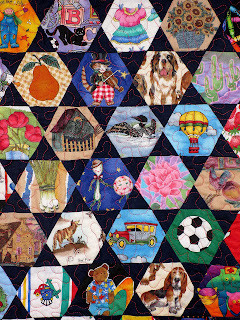I love to read. I have had a love affair with books my entire life. I also have a masters degree in information and library studies. I have always loved the look, the feel, the smell of the printed word but.....I looooove my Kindle. How to justify my love affair with my Kindle with my love of the physical book?
Over the course of my life, I have had to adjust to many changes not the least of which is digital technology. I started key punching programs that I wrote in graduate school and ran on a mainframe computer. My first computer was an Atari and later I graduated to a Windows PC and at this point I have owned at least 3 desktops and 3 laptops. I love computers although I do get crazy sometimes with their quirks but I appreciate all of the things that they can do for me from keeping my accounts to designing quilts to sharing my thoughts and feelings with friends and even strangers on Facebook and this blog.
Which brings me to the Kindle. I believe that digital books are the future (Amazon already sells more digital books than paper ones). I can read my Kindle books on my PC, my iPhone, my iPad or my Kindle reader. I have my current book available to me wherever I go and I can take 3,500 books with me at any one time. Try that with paper books. I have a built-in dictionary to check the definition and pronunciation of words instantly and I use it often because who wants to get up and find a dictionary to check out a word that is not familiar assuming that a dictionary is even available. The Kindle is lighter in weight than most books and can be read in bright sunlight unlike most digital readers. I can hear about a new book and download it to my Kindle in one minute or try a free sample chapter before committing to a purchase. No time consuming trips to the bookstore only to discover that they do not have the book in question. My tired old eyes also appreciate the ability to change the size of the font or listen to my book by turning on the audio.
We are living in an age when instant gratification is becoming the norm and digital books are only another reflection of that phenomenon. I believe that libraries and bookstores have a future but they must adapt and change as our culture changes. That is not a new concept for libraries. Many libraries already lend digital books and have computers available for patrons to use.
As of the last count, nine people have sold over a million digital books and one man, John Locke, has sold over a million SELF PUBLISHED digital books. He has even written a book about how he did it - "How I Sold 1 Million eBooks in 5 Months". The trick is MARKETING. The publishing industry must also adapt to current practices. Some publishers are limiting the number of times that a book can be borrowed from a library, some publishers are controlling the selling price of ebooks, and some booksellers are attempting to take a 75% cut of the selling price. It can be a win-win situation for everyone but it will take a while for all sectors to adapt and eventually thrive but don't worry.












